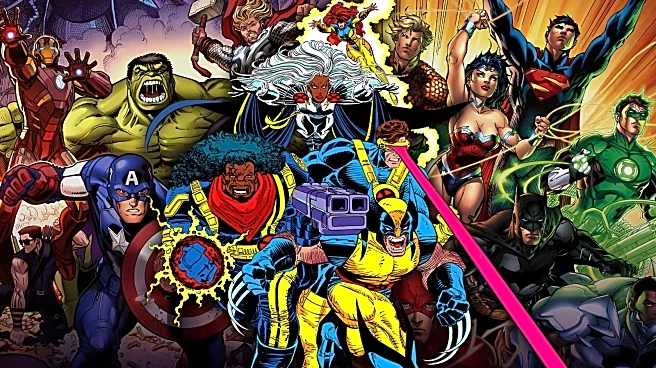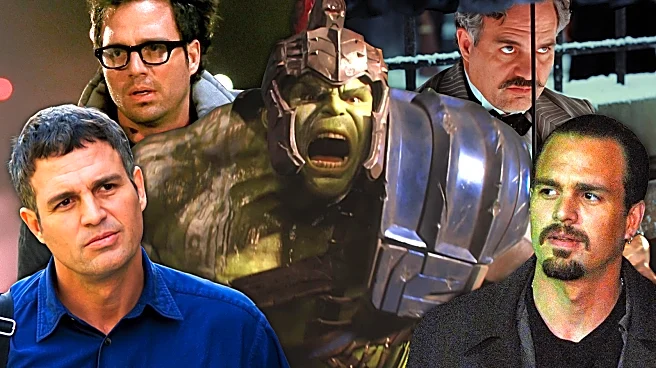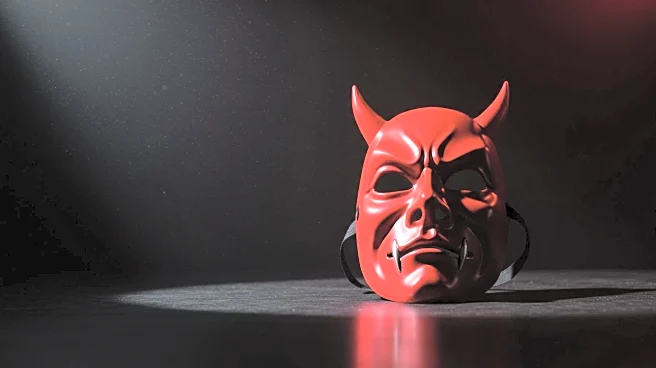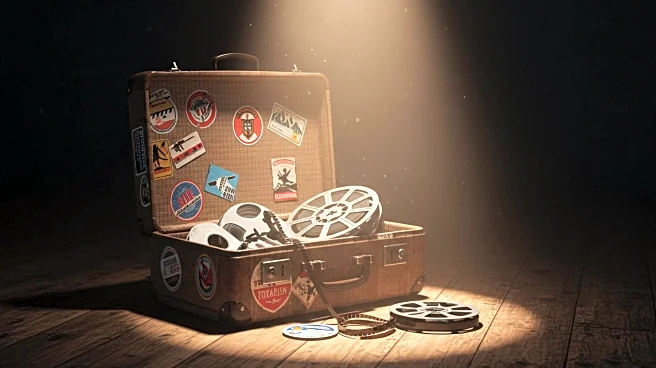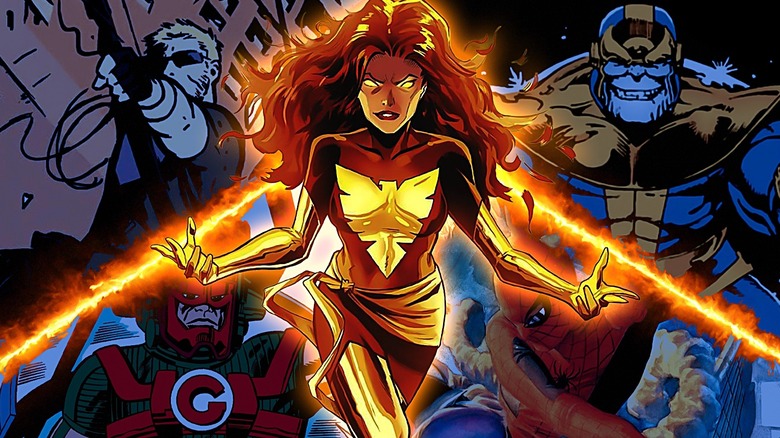
The Marvel Cinematic Universe's impact on the entertainment industry as a whole is a fiercely debated topic, but no one can deny the influence it's had over getting millions of people invested in the world of Marvel Comics. Marvel began in 1939, but it wasn't until the '60s when Stan Lee and Jack Kirby transformed the comic book company with franchises like "Fantastic Four," "Spider-Man," and "X-Men."
In the years since Marvel Comics' heyday, there have been many iconic comic book storylines featuring
some of the most powerful Marvel characters. However, even some of the company's most famous comics, like "House of M" or "Civil War," have drawn their fair share of critics as well as fans. For these 15 Marvel comic books (often comprised of numerous individual issues), you likely won't find as many detractors, as they span the best narratives and include some of the best moments in Marvel's long history of superhero stories.
Read more: Every Marvel Character Locked Up In The Raft
Scarlet Witch (2023)
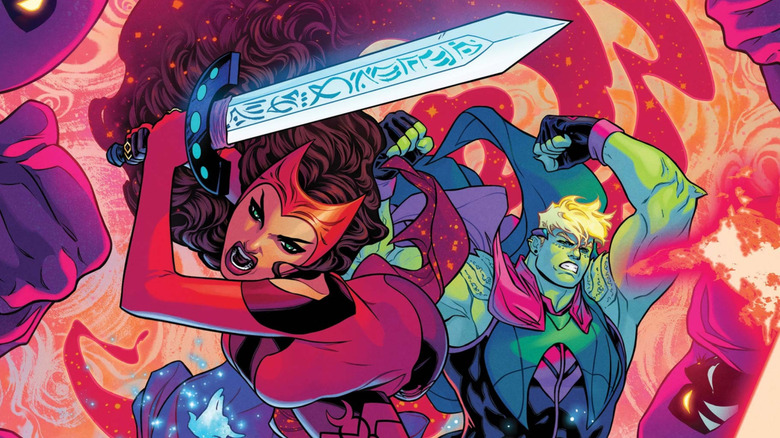
Despite being one of the most popular and strongest Avengers in the MCU, the Scarlet Witch has been a divisive character in Marvel Comics. Wanda Maximoff was initially introduced as an anti-hero of the X-Men; she later became a prominent Avenger before the miniseries "House of M" completely changed her trajectory, as she was single-handedly responsible for altering reality so that mutants were all made powerless. However, it isn't until her current solo series, beginning in 2023, that all comic book fans could agree the character was heading in the right direction.
Written by Steve Orlando with art from Sara Pichelli and Russell Dauterman, "Scarlet Witch" feels like the story Wanda fans have been dying for. The comic chronicles her attempts to not only rehabilitate a town from the evil doings of an Amazonian witch, but also her own past of violence and destruction. It picks up from where Leah Williams' "Trial of Magneto" storyline left off, which had begun the character's redemptive arc, but Orlando's series truly sees the Scarlet Witch reclaim her title as a proper Marvel hero.
The Amazing Spider-Man: Kraven's Last Hunt
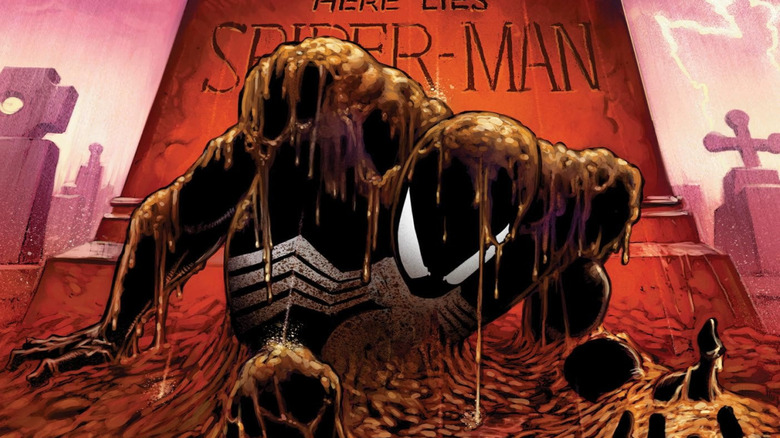
If we wanted to include all the great "Spider-Man" storylines on this list, we'd need a lot more than 15 entries. For one of our few "Spider-Man" choices, we had to go with the 1987 classic "Kraven's Last Hunt," a storyline compiled from several different ongoing series for Marvel's friendly neighborhood web-slinger. Don't let Sony's stupid but entertaining Spider-Man villain movie turn you off, because "Kraven's Last Hunt" establishes the Russian hunter as one of Peter Parker's most formidable foes.
Early in the plotline, Kraven supposedly kills Peter, and to prove his victory isn't a fluke, he dons the Spider-Man costume to fight crime, albeit with a lot more violent tendencies than Peter ever caved to. Peter ends up surviving, and Spider-Man rematches Kraven in one of the character's most brutal fights against the cannibalistic mutate known as "Vermin," who had been captured by Kraven. Ultimately, satisfied that he was able to best Spider-Man, Kraven ends his own life, but not before exonerating Peter from all his criminal activities while masquerading in his costume.
Ms. Marvel: No Normal
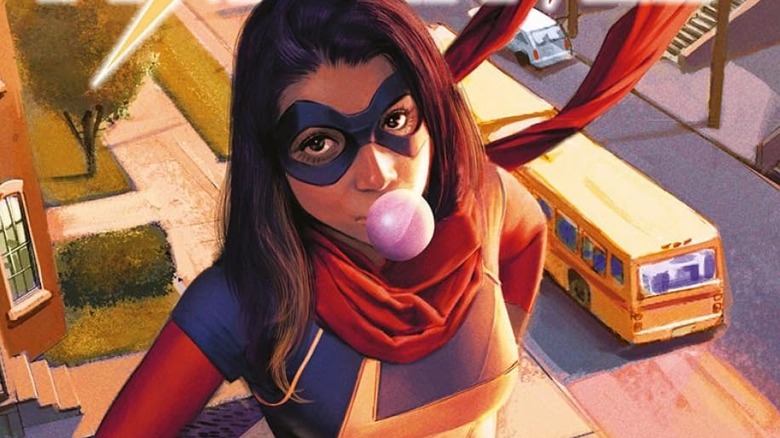
Of all comic book superheroes to debut in the past decade or so, few have captured the hearts of Marvel fans like Kamala Khan, the New Jersey-born teen who, after a worldwide spread of Terrigen mist, has her innate Inhuman powers of polymorphing (the ability to change her limbs' shape and size) unlocked. Inspired by her favorite Avenger, Carol Danvers/Captain Marvel, Kamala takes up the mantle of Ms. Marvel and becomes a promising member of Marvel Comics' cast of young superheroes.
For those who loved the breathlessly imaginative teen comedy "Ms. Marvel" on Disney+, you'll be happy to know that its comic book counterpart is among the best origin stories in Marvel's recent history. "No Normal" compiles the first five issues of Kamala's solo series, and even on the page, her characterization is lovable and rich with an appreciation for Marvel Comics fans themselves. Even more so than Peter Parker's earliest stories, "Ms. Marvel" feels like the first time comic book fans could see themselves in the main character, whether they're Pakistani-American like the Khans or if they just love superheroes as much as she does.
Spider-Man: Blue
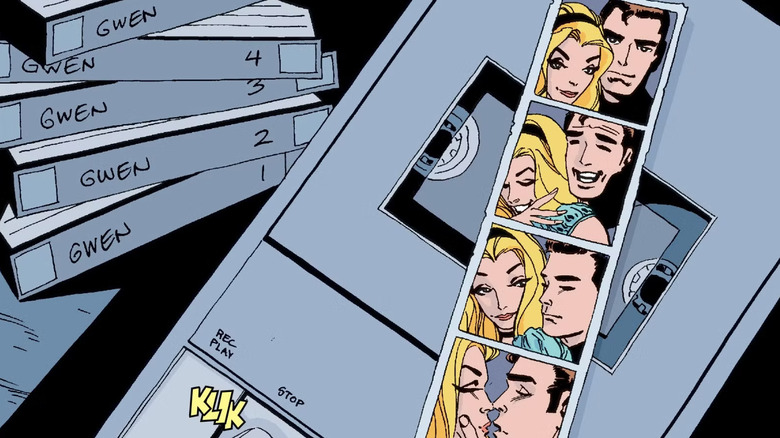
One of the most iconic moments in the history of Marvel's "Spider-Man" comics is when Gwen Stacy died in "The Amazing Spider-Man" #121, a landmark moment for the franchise where arguably its biggest hero suffered his biggest loss by failing to save his biggest romantic interest. While "The Night Gwen Stacy Died" is an incredible comic all on its own, what's even more heart-wrenching are the ways Marvel Comics has expanded upon this moment, such as in the 2002 limited series "Spider-Man: Blue" written by Jeph Loeb with art from Tim Sale.
"Spider-Man: Blue" is structured around a framework of Peter Parker, in the future, long after Gwen's death, recounting their love story via tape recordings. The narrative jumps around in time, with plenty of classic Spider-Man action involving his rogues gallery, but it's also a deeply beautiful story about how, in the face of grief and tragedy, Peter found love again with Mary-Jane Watson, who is not only accepting of his lingering feelings towards Gwen, but encourages him to remember her.
Weapon X
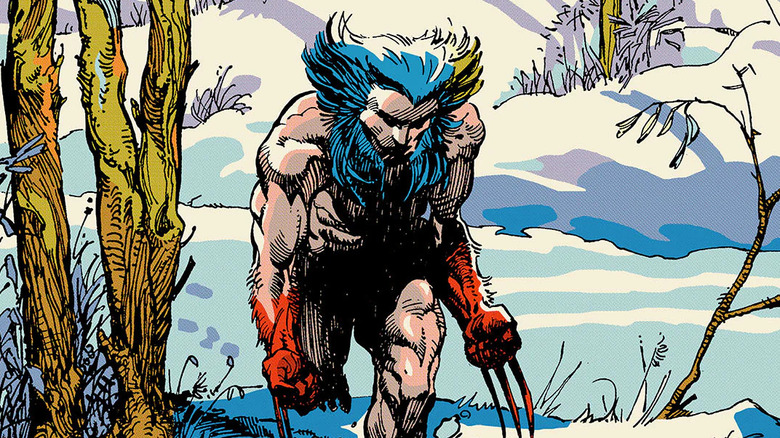
The origin story of Wolverine has been told and retold time and time again in Marvel Comics, but the version of events that's stuck with fans the most is "Weapon X," a story arc that originated in the 1991 series "Marvel Comics Presents" over the course of 12 issues. As "X-Men" fans know, Weapon X is the aptly-named government experimentation on mutants, which Logan was forced into, bonding his skeleton with adamantium and turning him into a mindless killing machine. "Weapon X" tells the story of Logan's capture, subjugation to becoming a living weapon, and his escape.
While some of the worst things Wolverine has ever done are due to his lack of control, "Weapon X" is essentially what established his character as an indestructible mutant and one of the most powerful beings in the Marvel universe. The comic book story arc is mainly told through the point of view of other individuals involved in "Weapon X," namely the scientists responsible, which only helps to dehumanize the character of Wolverine within the context of the story.
Planet Hulk
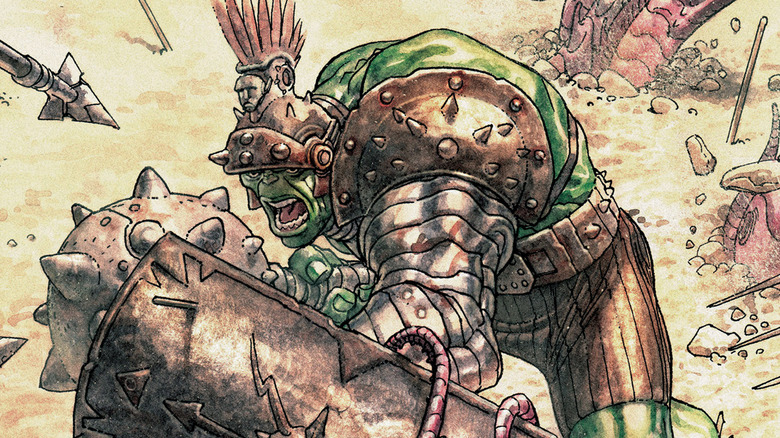
Bruce Banner, a.k.a. the Hulk, is theoretically one of the most tragic figures in Marvel Comics, though he's also been the center of some of its most eclectic and fun storylines. That's certainly true of "Planet Hulk," a 13-issue story arc beginning in 2006 in which the Illuminati (Doctor Strange, Reed Richards, Tony Stark, and Black Bolt) make the executive decision to send the Hulk off-planet to Sakaar, where he's forced into slavery as a gladiator, allying with a group of warriors known as the Warbound and becoming heroes after usurping Sakaar's cruel dictator, the Red King.
While fans of the MCU may recall these events from "Thor: Ragnarok," which still stands out as Marvel's silliest movie, Taika Waititi's film doesn't do justice to the epic scale and action found in "Planet Hulk." It's also an incredibly integral story in the Hulk's canon, paving the way for the character's revenge quest against the Illuminati on Earth, having become even stronger on Sakaar as a direct result of his exile. Some Marvel Comics fans may prefer the darker, higher stakes of "World War Hulk," but "Planet Hulk" feels like the enjoyable cosmic adventure the Hulk was made for.
Daredevil: Born Again
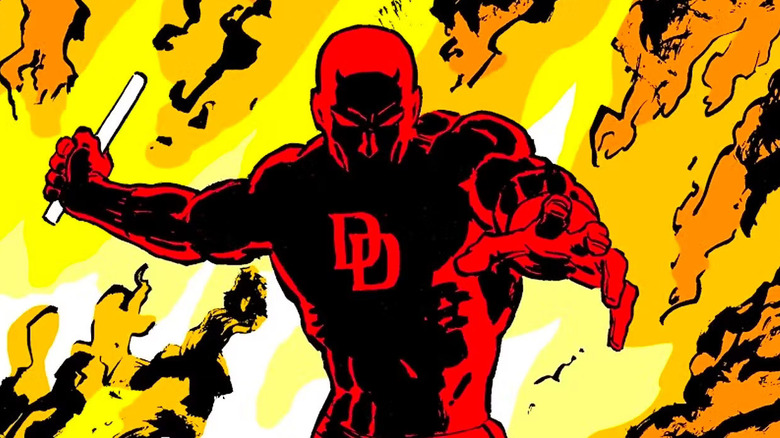
Although it shares its name with the MCU's "Daredevil: Born Again," the "Born Again" arc from the "Daredevil" comics is even darker than the Disney+ series, believe it or not. Written by Frank Miller, one of the most prolific and influential comic book writers of all time, "Born Again" lasted for six issues but contains some massive shifts to the world of Matt Murdock. It all begins when Karen Page, Murdock's former lover, goes on a drug-fueled bender that results in her selling Daredevil's secret identity to the Kingpin, a.k.a. Wilson Fisk, his mortal enemy.
As Murdock's life collapses from the fallout of Kingpin sabotaging him, he is disbarred and, soon after, descends into madness as he fails to enact revenge on Fisk. This redemptive journey for Murdock sees him reconnecting with his past, particularly placing emphasis on his history with Catholicism. It's not only possibly the best "Daredevil" story in Marvel Comics, but also a harrowing and transformative journey for the Hell's Kitchen hero that truly earns him the name of "the Man Without Fear."
Hawkeye (2012)
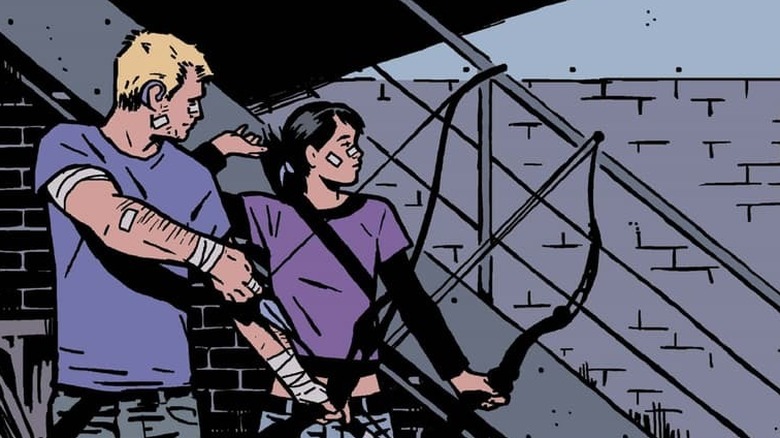
Marvel's superhero series "Hawkeye" with Jeremy Renner and Hailee Steinfeld took a lot of inspiration from one era of Clint Barton's comic book adventures, in particular. The 2012 run of "Hawkeye," written by Matt Fraction with art by David Aja, reinvented the titular Avenger by pairing him up with Kate Bishop, a young archer who had initially debuted in 2005's "Young Avengers" series, in which she (perhaps naively) helps the team battle the likes of Kang the Conqueror. However, Fraction's take on "Hawkeye" comfortably repositions Barton and Bishop as street-level crime-fighters.
Together, just like in the Disney+ series, Barton and Bishop (as well as the one-eyed Lucky the Pizza Dog) take on the Tracksuit Mafia, after Kate's amateur vigilanteism makes her the target of New York City criminals. All in all, it's a much breezier read than some of the other Marvel comics on this list, with its strongest asset being the dynamic between the purple-clad mentor and mentee. Especially for a hero as underrated as Hawkeye, Fraction's series surprisingly teaches an old dog some new tricks.
Secret Wars (2015)
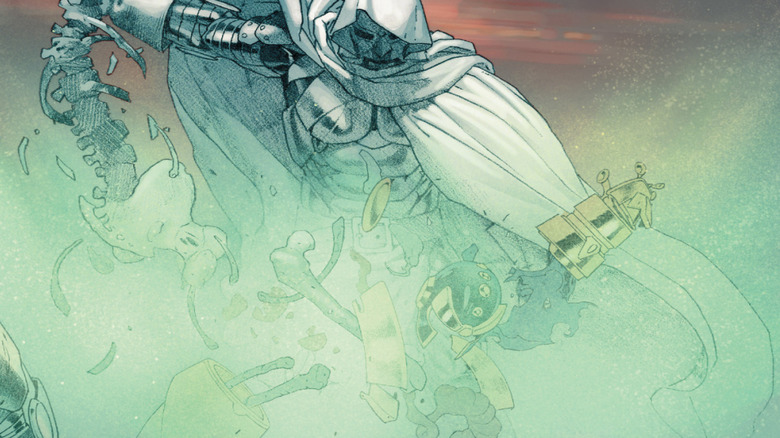
Odds are, you will likely hear a lot about Jonathan Hickman's "Secret Wars" comic in anticipation of the MCU's "Avengers: Doomsday" and "Avengers: Secret Wars" in 2026 and 2027, respectively. Although the concept of "Secret Wars" comes from a Marvel Comics crossover from the 1980s, Hickman led its reprisal in 2015 after heralding iconic, character-defining runs of "Fantastic Four" and "The Avengers," though the real star of the show isn't the hero, but the villain: Victor von Doom.
After the Marvel universe is thrown into jeopardy due to an incursion between alternate timelines, Doom uses the power of the Beyonders to assume the title of God Emperor, merging together realities into one patchwork universe known as Battleworld, which he single-handedly rules. For a story as complex in scale and ambitious in scope as Hickman's "Secret Wars," the fact that it remains a seminal part of Marvel Comics' recent history, and likely will majorly influence the Marvel Cinematic Universe's next steps, means it deserves its spot on this list. At the very least, you have to applaud Hickman for how he was able to weave together years of comic book storytelling into one cohesive and epic crossover event.
Infinity Gauntlet
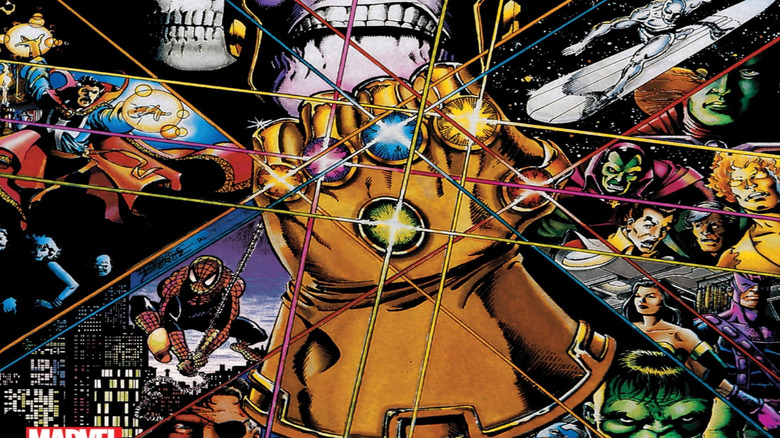
Speaking of the Marvel Cinematic Universe, it's still hard to believe for die-hard Marvel Comics fans that the film franchise turned a character like Thanos into a household name. Although Thanos was created by Jim Starlin back in the '70s, the 1991 limited series "Infinity Gauntlet" was the moment where the character made his mark on the comic book franchise. Spanning six issues, "Infinity Gauntlet" kicks off with Thanos having finally assembled all six Infinity Gems and erases half of all living things in an attempt to woo Mistress Death.
While snapping away half of all life is easily one of the worst things Thanos has ever done, what's surprising about this six-issue series is how many twists and turns even fans of "Infinity War" and "Endgame" will be surprised by. After Adam Warlock leads humanity's greatest heroes (at least, the ones who are still alive) in a revenge quest against Thanos, a new villain rears her ugly head: Nebula, Thanos' adopted daughter, who steals the titular gauntlet, forcing the Mad Titan to team up with the Avengers in the storyline's climax. As far as Marvel's cosmic epics go, "Infinity Gauntlet" is the most iconic one for good reason.
Fantastic Four: The Galactus Trilogy

The Fantastic Four are one of the biggest superhero teams in Marvel Comics, so it's surprising that it took until 2025's "The Fantastic Four: First Steps" for the MCU to get it right with these heroes' most memorable comic book storyline. "The Galactus Trilogy" was a three-issue story arc in the original "Fantastic Four" series from 1966, and is so revered by fans that, following the death of Stan Lee, it was praised by The Atlantic as "the indisputable pinnacle of the so-called Silver Age of comic books."
In "The Galactus Trilogy," Marvel's First Family is visited by the Silver Surfer, the herald of the cosmic entity Galactus, who has come to warn Earth's inhabitants that their planet will soon be consumed. The Four have little recourse to stop the giant, relying on the Surfer's willingness to switch sides and Johnny's ability to obtain the Ultimate Nullifier, a weapon from Galactus' home planet that thankfully convinces the space god to spare Earth -- for now. Not only did "The Galactus Trilogy" introduce the comic book world to the soon-to-be fan-favorite Silver Surfer, but it also showcases the Fantastic Four's capability of stopping cosmically-sized threats with teamwork and determination.
Doctor Strange & Doctor Doom: Triumph And Torment
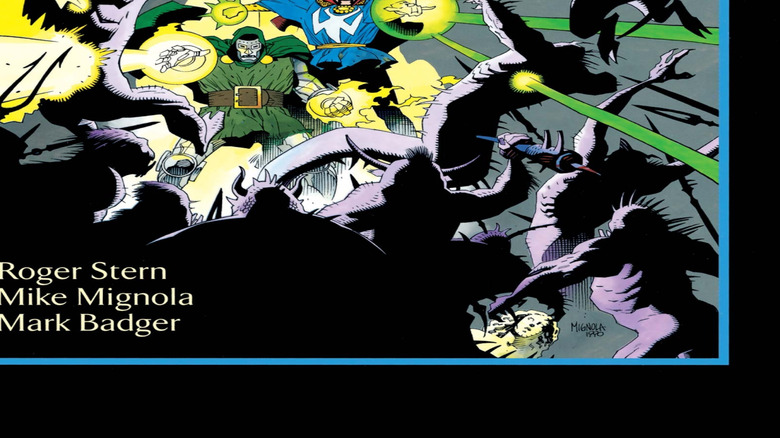
Perhaps it was obvious that pairing up Doctor Strange and Doctor Doom for a comic book storyline would result in an epic story of magical proportions, but no one could've predicted how compelling "Triumph and Torment" would turn out. Published in 1989, this Marvel Comics graphic novel sees an unexpected team-up between the Sorcerer Supreme and the Fantastic Four's mortal enemy, on a quest through hell to free the soul of Doom's mother from Mephisto. Although Strange gets top billing, you must read this if you want to understand why Doom is considered one of Marvel's baddest big bads, as it's really his story more than Strange's.
Surprisingly, lots of readers emerge from finishing "Triumph and Torment" feeling some real empathy for Doom, given how much of his backstory and personal psychology is delved into by writer Roger Stern. On the one hand, it feels like an incredibly isolated, one-off story in the Marvel Comics universe, but on the other, it's one of the most integral to understanding the mythos behind the mask of Victor von Doom.
X-Men: The Dark Phoenix Saga
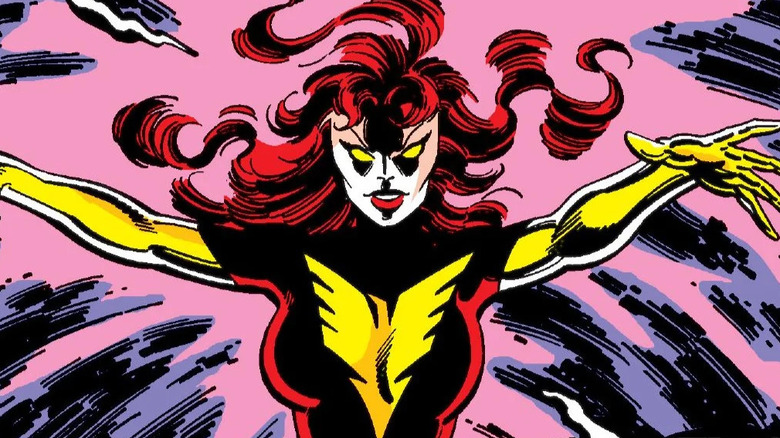
There are tons of iconic "X-Men" storylines, but there's a reason why the films keep coming back to "The Dark Phoenix Saga" despite box office flops. Simply put, it's a hard story to get right. Debuting in 1980 in a nine-issue run of "Uncanny X-Men," the storyline centers on the mutant Jean Grey's corruption by the cosmic being known as the Phoenix, turning her from a hero into an uncontrollable monster who wreaks havoc on mutantkind, forcing Jean's loved ones to grapple with her heel turn and subsequent defeat.
It's no wonder that fans keep coming back to this again and again. Never are the X-Men more divided and united all at the same time than when they're up against one of their own. Of course, when the writing is being helmed by Marvel Comics veteran Chris Claremont, who's responsible for creating many of the X-Men franchise's most iconic characters, you really can't go wrong. Later Marvel Comics storylines have even tried to re-adapt Jean Grey's descent into Dark Phoenix, but it's hard to top the original.
Annihilation
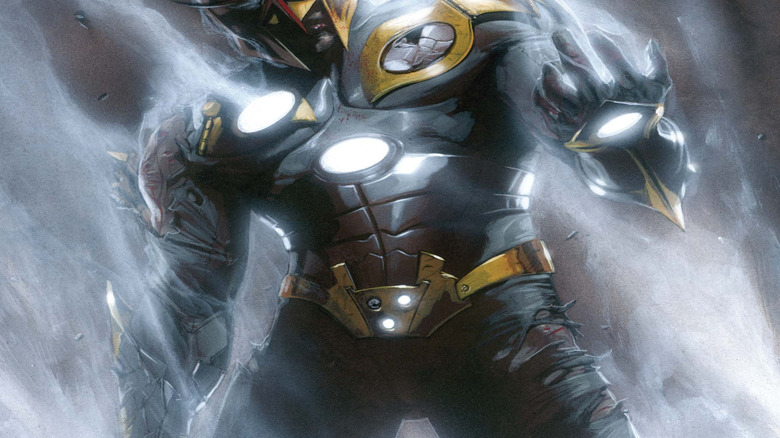
If you ask a die-hard Marvel Comics purist what their favorite crossover event in the history of the franchise is, chances are they'll probably mention "Annihilation." This saga brought together plenty of Marvel's cosmic characters across the spectrum of good and evil to defend Earth-616 against the invasive forces of Annihilus, the Arthrosian warlord from the Negative Zone, who leads an armada called the Annihilation Wave. During their first battle against the Nova Corps, all but one member (Richard Rider, a.k.a. Nova) is completely wiped out in the massacre.
Though "Annihilation" was almost the villain of "Guardians of the Galaxy Vol. 3," it's clear that not even those films are ready to adapt such a cosmically massive storyline. Alongside Nova, "Annihilation" features key moments in the comic book histories of the Guardians, Thanos, the Skrulls, and even Galactus himself. Keith Giffen's main "Annihilation" series is easily the biggest and most game-changing crossover event Marvel Comics has seen thus far.
Marvels
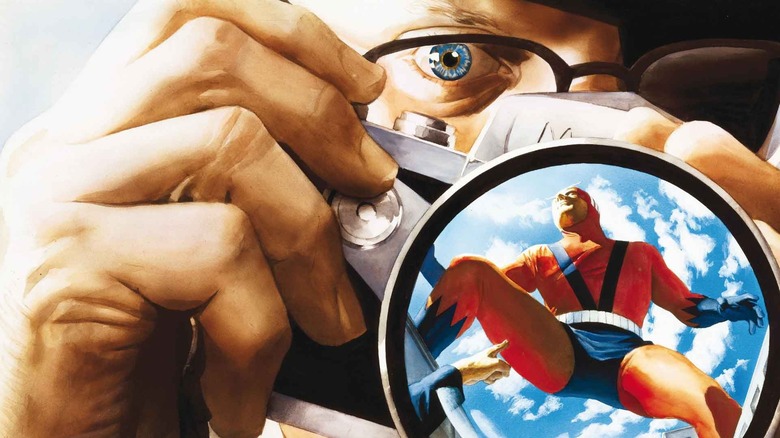
In 1994, this four-issue limited series was ambitious not in its scale or complexity, but in its emotional poignancy. Written by Kurt Busiek, "Marvels" tells the decade-spanning story of Phil Sheldon, a powerless photojournalist who views key moments in Marvel Comics history from his own point of view, chronicling them in an in-universe narrative also called "Marvels." The critically acclaimed comic centers on several iconic storylines from throughout Marvel Comics' history: the creation of the first Human Torch, Captain America's participation in World War II, the public outcry over mutants, and even the first arrival of Galactus.
It's the fourth issue of "Marvels" that's Busiek's biggest gut punch, as Sheldon witnesses the iconic scene where Spider-Man fails to save Gwen Stacy from her fatal death at the hands of Green Goblin. In an almost meta moment, Sheldon loses hope in superhumans' ability to be the heroes he's chronicled them being throughout several decades, symbolizing the real-life impact Spider-Man's loss had on comic book fans. If you have any nostalgia or positive feelings towards Marvel Comics as a brand, then "Marvels" is the perfect read that uncovers hidden connections across their entire comic book library.
If you're looking for the easiest way to keep up with all the major movie and TV news, why not sign up to our free newsletter?
Read the original article on SlashFilm.
